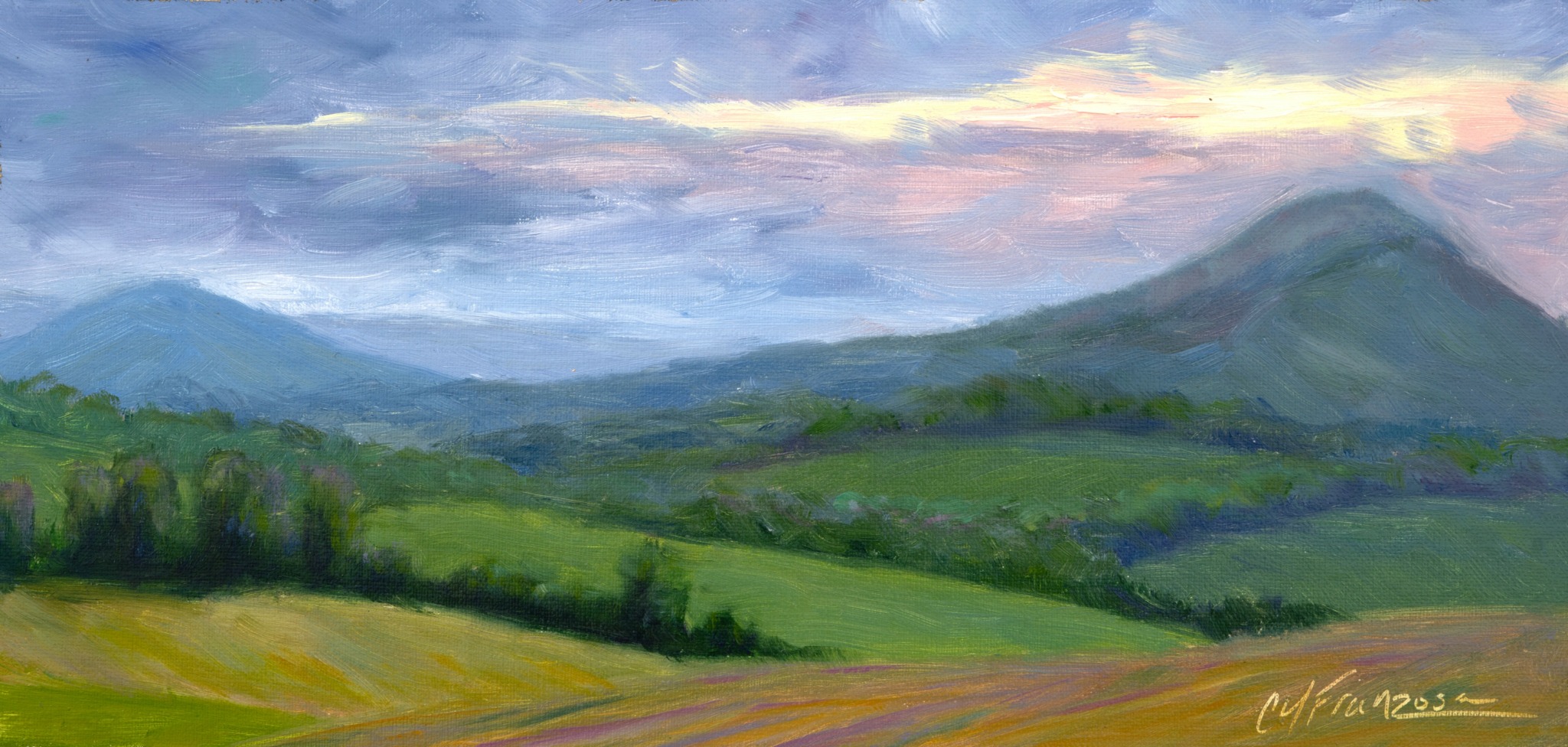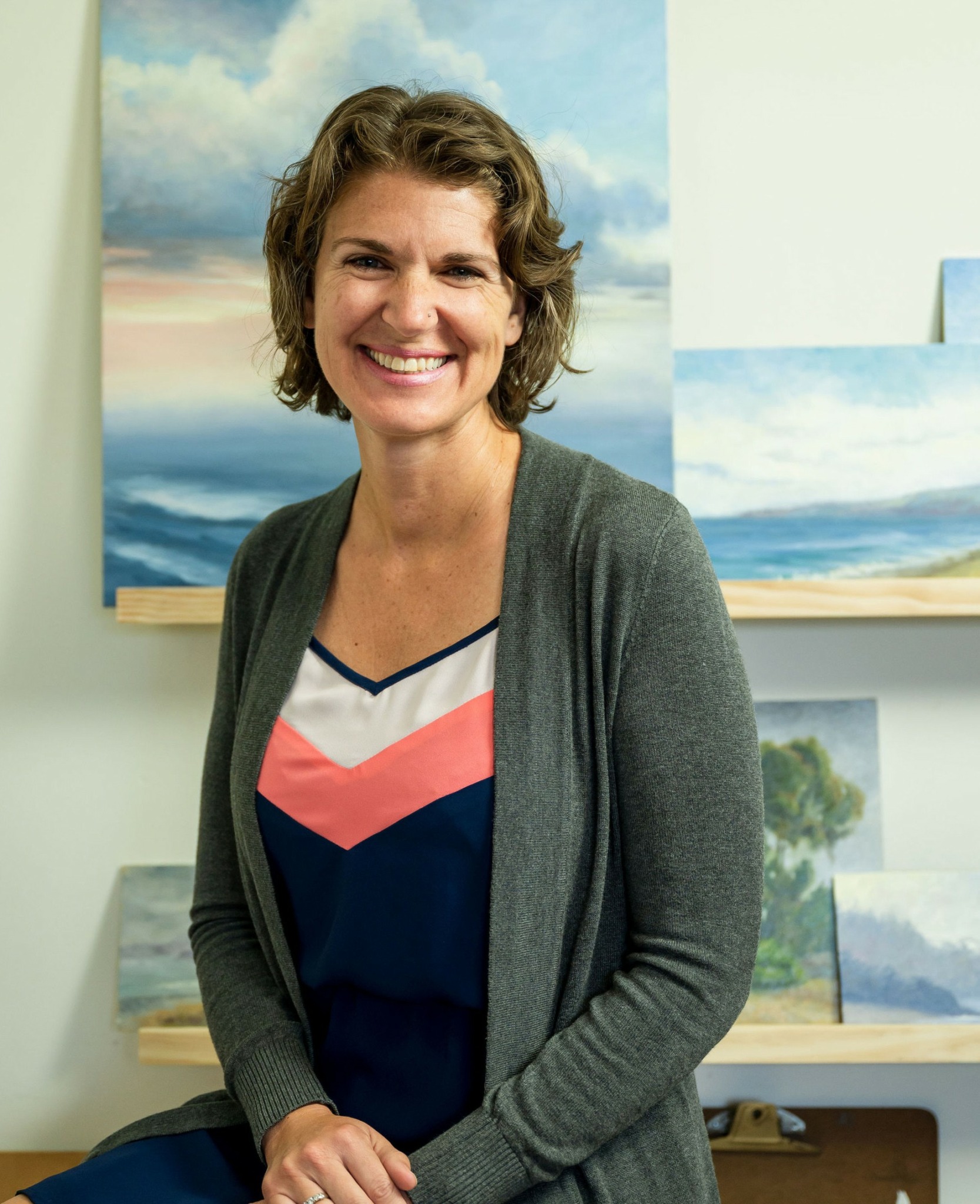We recently connected with Calina Franzosa and have shared our conversation below.
Calina, thanks for taking the time to share your stories with us today We’d love to hear about when you first realized that you wanted to pursue a creative path professionally.
I’ve always loved drawing and painting, but when I went to college, I thought I needed a “regular” job with a steady paycheck. So, I decided to become a high school English teacher, earning a degree in English and a teaching credential.
During Winter Break of my first year in college, I was in a serious car accident. I ended up in the hospital with a broken pelvis and a severe concussion. By the start of the next semester, I was on crutches and still struggling with concentration, memory, and clear thinking. To lighten my workload, I only enrolled in two art classes: Intro to Drawing and Intro to Painting. I fell in love with them. They reignited my passion for creating, and I decided to double major in Art and English.
After earning my undergraduate degrees, I went to grad school for a master’s in Education and my teaching credential. The demands of school and teaching soon took over, and I stopped painting. I poured myself into my job as a high school English teacher, thinking I’d pick up painting again after settling into my career—but that time never came.
In my third year of teaching, everything changed. A student head-butted me, causing another concussion. This time, I experienced memory loss, constant migraines, dizziness, and confusion. I tried to keep teaching but couldn’t. I spent a lot of time in a dark room, trying to recover.
One day, a friend visited and brought supplies for painting mandalas. At first, I wasn’t particularly excited about the project. But as soon as I picked up a brush and started mixing colors, something awakened in me. The joy of painting came flooding back—the feel of the paint, the satisfaction of blending colors, and the magic of creating something new.
From there, I began taking plein air painting classes and slowly worked to rebuild my skills while also healing my brain. Being outdoors with my easel, surrounded by the beauty of nature, brought a sense of peace and connection I hadn’t felt in years. There’s a special joy in painting en plein air—the sunlight, the breeze, the sounds of the world around you—it’s like collaborating with nature itself.
Painting became a lifeline, a way to reconnect not just with myself but with the world. It was a delicate balance of rest and practice, but I knew deep down that painting was my true calling. Art wasn’t just something I loved—it was what I was meant to do. (And, given my history, it seemed the universe was determined to make sure I got the message!)
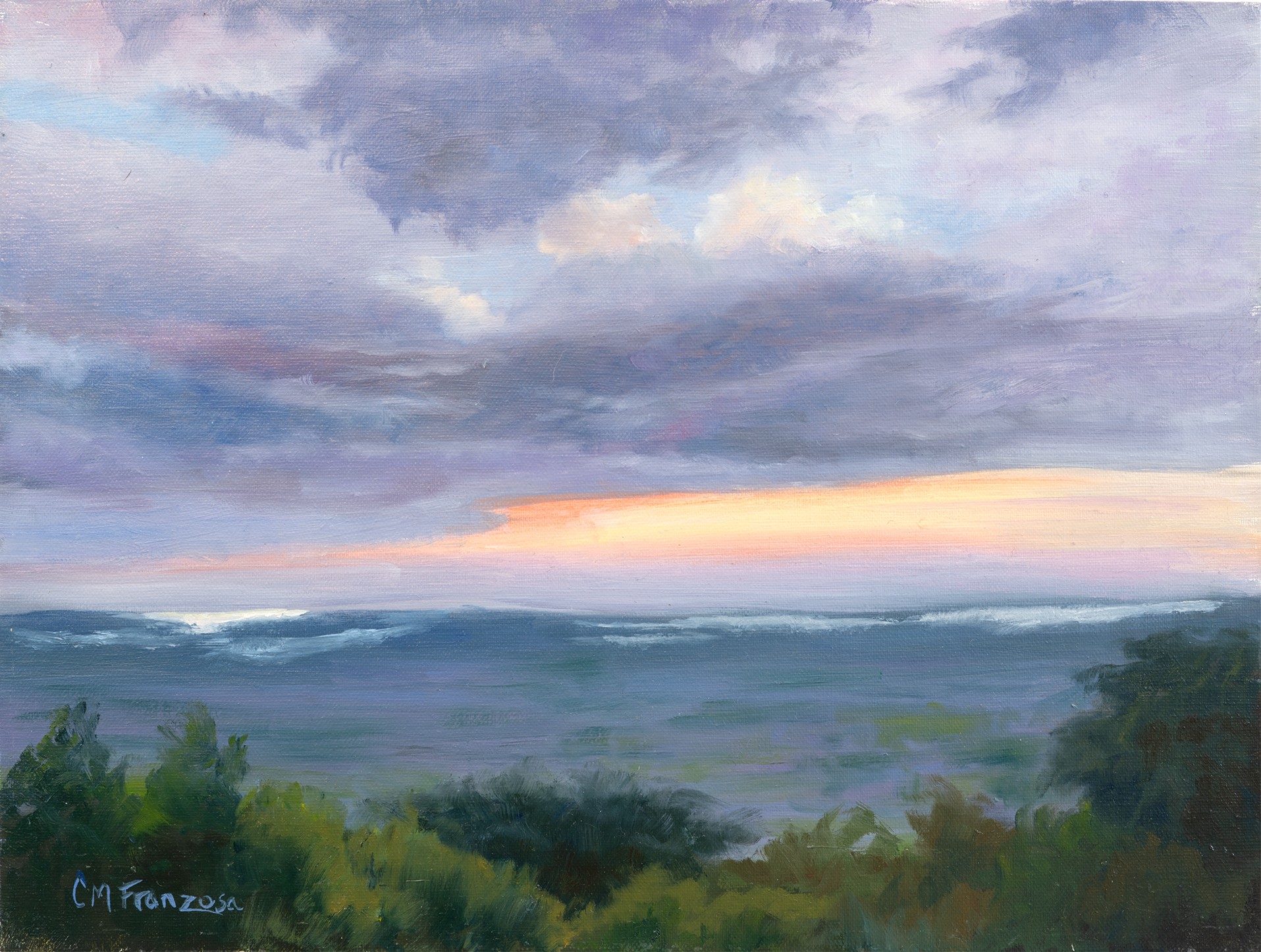
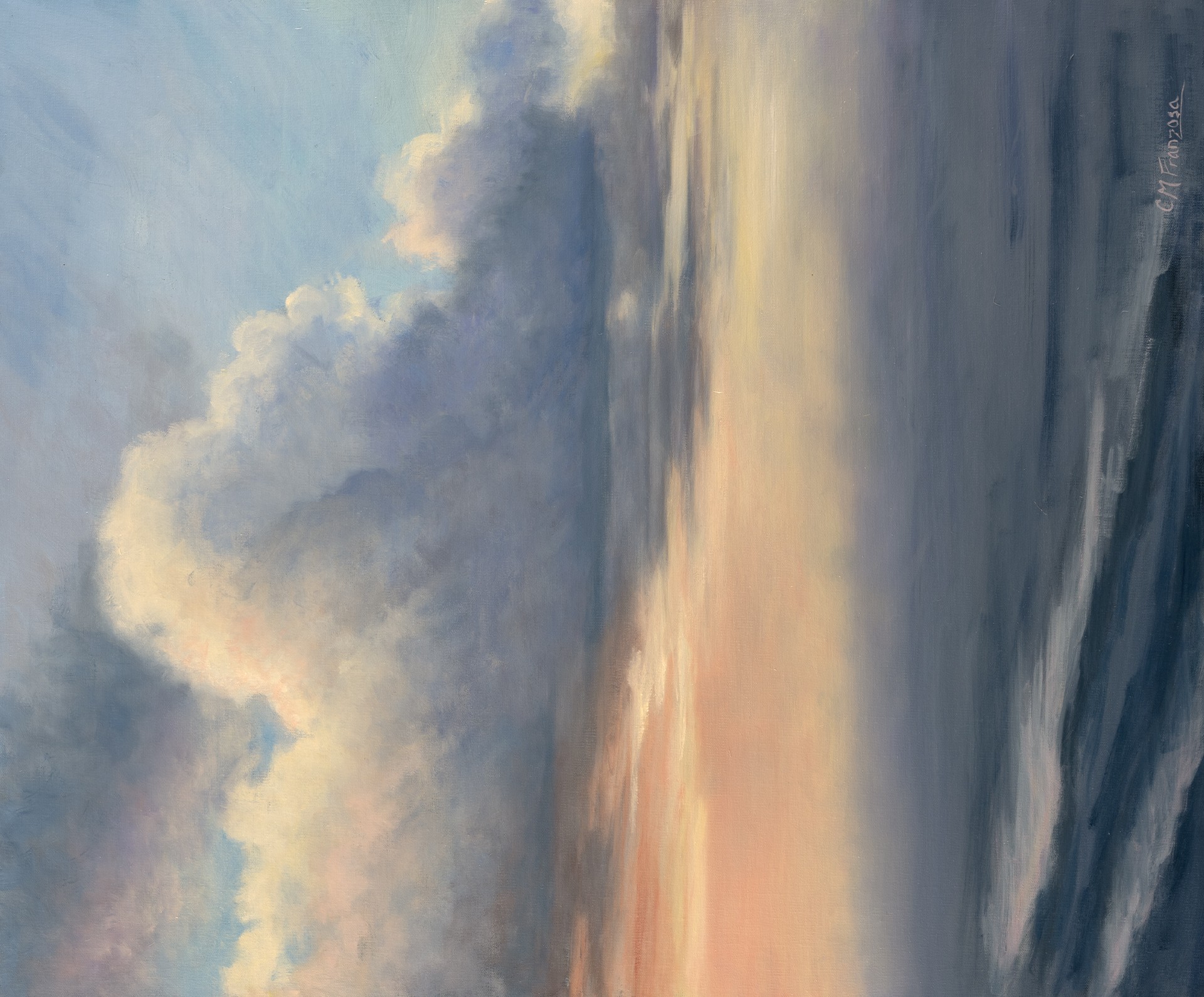
Calina, before we move on to more of these sorts of questions, can you take some time to bring our readers up to speed on you and what you do?
I create “brushy realism” paintings both en plein air and in my studio, fueled by my dream of a calmer, more grounded world. As a military spouse, I’m constantly uprooted, moving from place to place and seeking to create a sense of home wherever I go. Plein air painting grounds me, offering a way to connect deeply with my surroundings and transform each new location into a place of peace and belonging.
In every new place I live, I search for the wild, the water, and the quiet beauty that nature provides. These become my inspirations. My paintings aim to capture the beauty and tranquility I find—whether it’s the breeze rustling through palm trees in San Clemente, CA or the first light of dawn illuminating a rooftop in Alexandria, VA. Each piece reflects the fleeting emotions and serenity of those moments.
My work is soft and quiet, evoking a sense of emotional nostalgia. I strive to preserve nature’s ephemeral moments: the glow of sunrise, the dance of whitecaps on stormy waters, or the delicate hues of fog lifting at dawn. Through painting, I aim to freeze these moments and share their tranquility with others.
In my art, I focus on the ethereal effects of light, subtle shifts in color, and the sensations of air and time. I want viewers to feel the cool breeze of a sunset or the warmth of first light, to immerse themselves in the serenity of these captured scenes.
Travel has shaped my life, exposing me to places both unique and familiar. Each new experience infuses my paintings with a deep sense of place and nostalgia, offering a window into the beauty I find in every corner of the world. Through my art, I hope to inspire others to pause, reflect, and connect with the quiet wonder of nature.
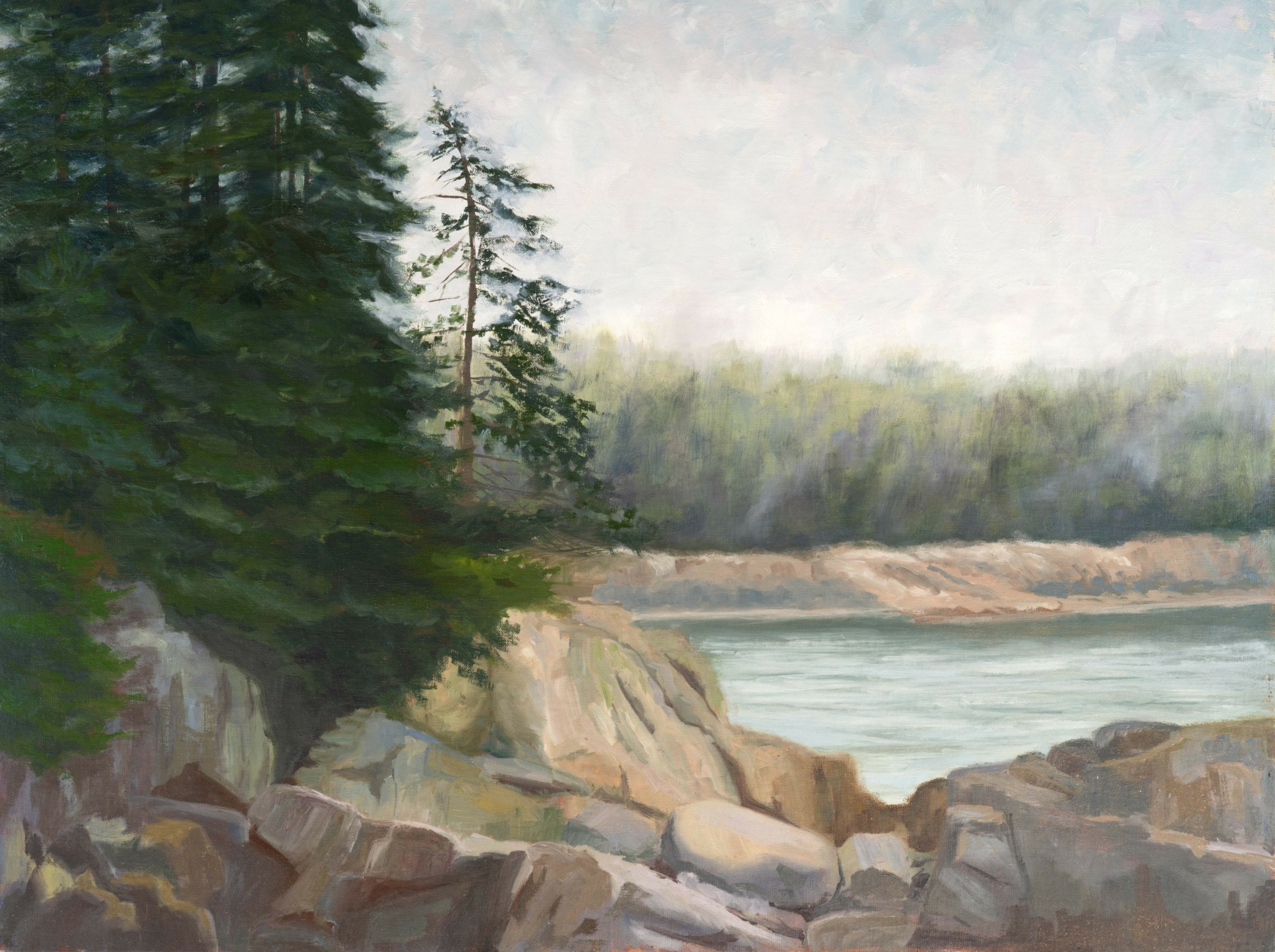
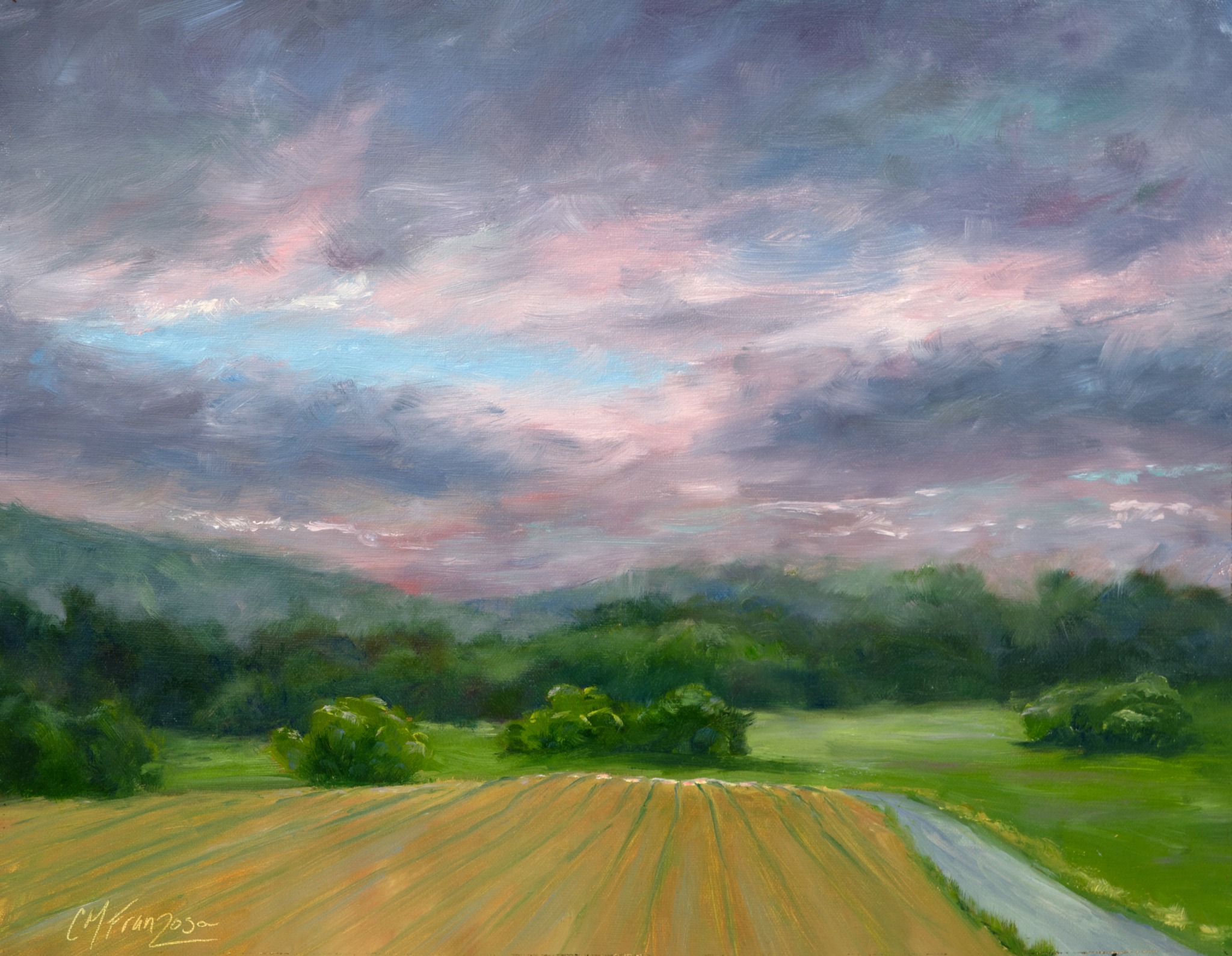
What’s the most rewarding aspect of being a creative in your experience?
One of the most rewarding aspects of being an artist is engaging with people about my work. Whether in my current studio, which is open to the public, or while plein air painting, I love welcoming people who stop by to watch me paint and share conversations about art and the creative process. Before becoming a full-time artist, I was a high school English teacher. Teaching and inspiring others has always been a passion, and now, I bring that same enthusiasm to teaching people about painting.
When I’m painting, people often stop to chat about my work and process. These conversations provide a wonderful opportunity to share insights into the art-making process—explaining how I mix colors, choose brushstrokes, or capture the fleeting effects of outdoor light. These discussions not only allow me to teach others about painting but also challenge me to think critically about my own approach and refine my craft.
Many viewers are curious about the locations in my paintings. My portfolio includes diverse locations—from China, Cuba, Mexico, and Italy to regions across the United States, such as the West Coast, Southwest, New England, and Mid-Atlantic. These conversations often lead to meaningful exchanges, with visitors sharing their own memories and connections to these places, leading to conversations about conservation, preservation, and the importance of protecting natural and cultural landscapes.
For me, the process of creating art is deeply gratifying, but equally fulfilling is fostering these connections. Through my work, I aim to inspire not just an appreciation for beauty but also a dialogue around art, memory, and the importance of caring for the world we share.
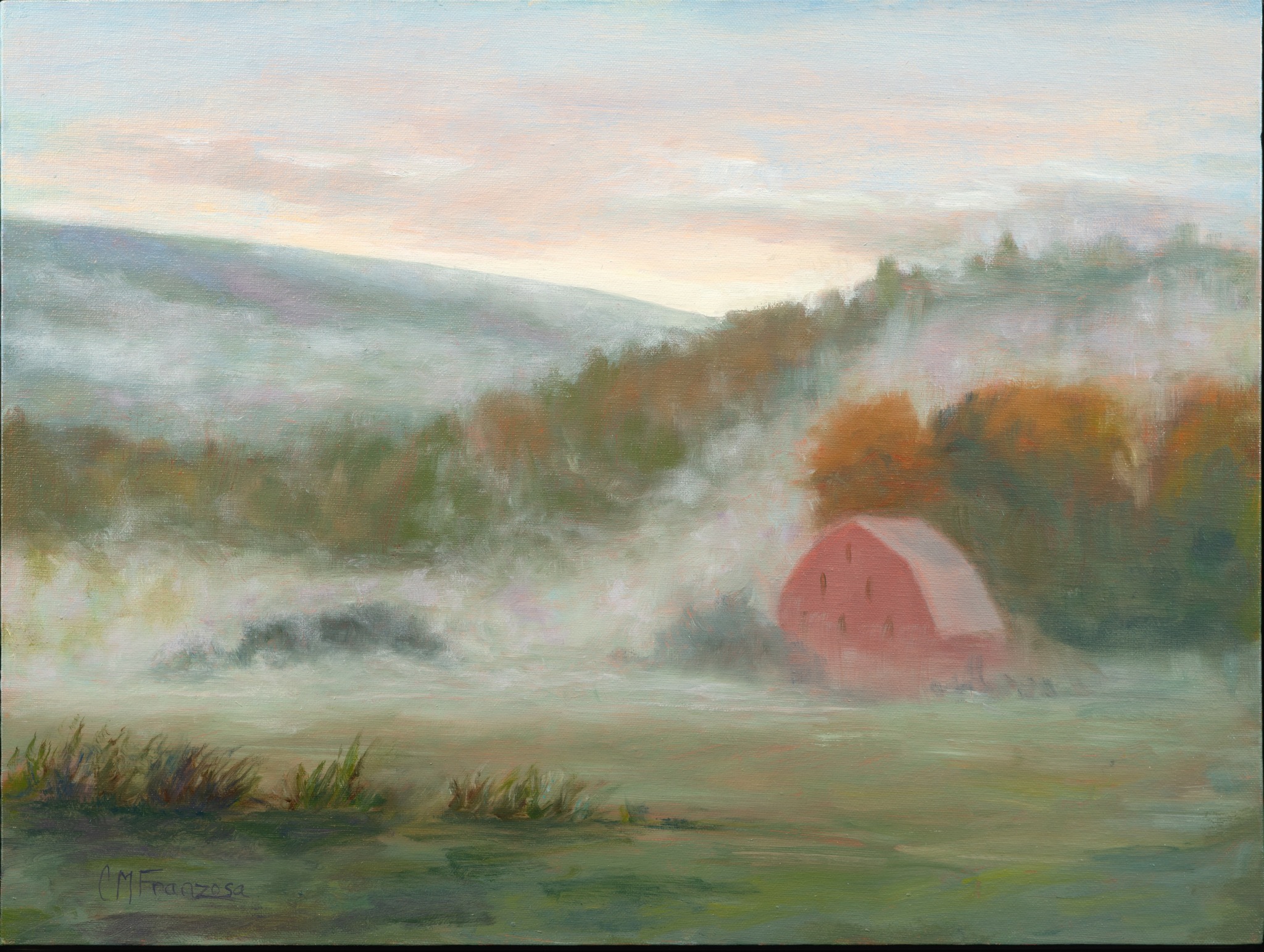

What can society do to ensure an environment that’s helpful to artists and creatives?
Besides buying more handmade work, society can support artists and a thriving creative community by creating more affordable, community-focused spaces where creatives can work, connect, and share their art. My current studio is in a repurposed torpedo factory that was turned into artists’ studios in the 1970s. The discounted rents make it easier for artists like me to focus on our work, and the space provides so much more than just a studio. It’s a place where we can connect with other artists, build community, and welcome patrons to see and purchase our work.
Having more spaces like this would make a huge difference. They allow artists to share their craft with the public, collaborate with others, and be part of a vibrant cultural hub.
Supporting the arts means investing in creativity, fresh ideas, and what connects us as humans.
Contact Info:
- Website: https://www.calinafranzosa.com
- Instagram: https://www.instagram.com/calinafranzosa/
- Facebook: https://www.facebook.com/calinafranzosafineart
- Linkedin: https://www.linkedin.com/in/calina-franzosa-70a45a284/
- Other: Pinterest: https://www.pinterest.com/Calina_Franzosa/
